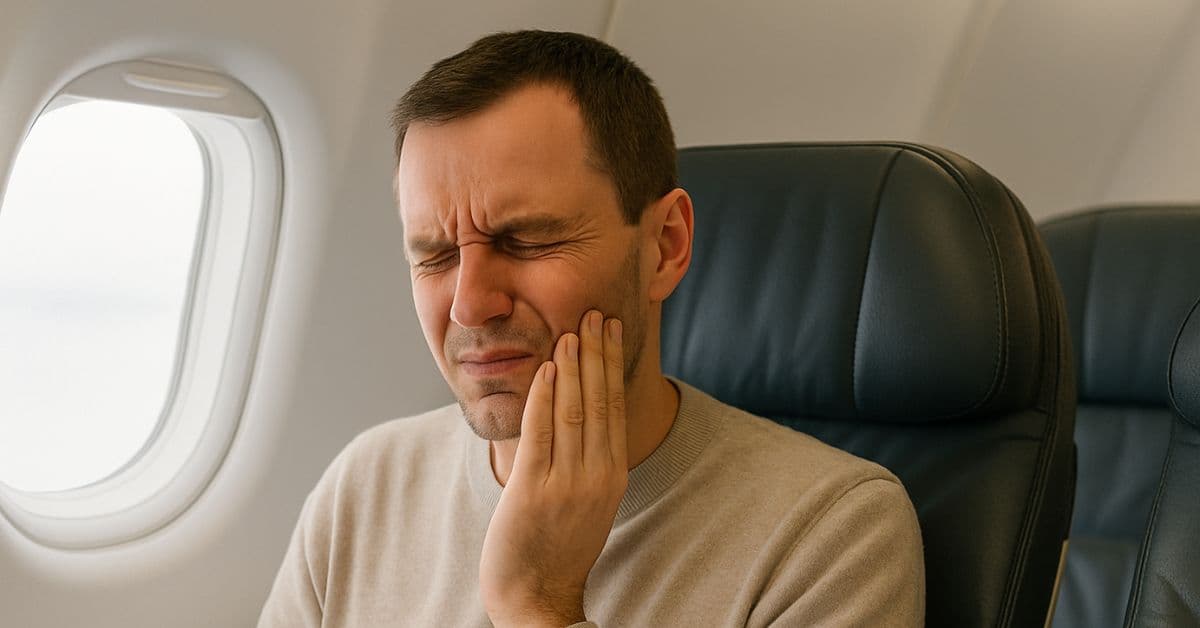Summer is just around the corner and with it comes back the desire for vacations, explorations ... and FLIGHTS. But if you have ever experienced a Sudden toothache during takeoff or landing, you may have experienced a little-known but rather annoying phenomenon: the barodontalgia.
What is barodontalgia?
La barodontalgia is a Tooth pain caused by changes in atmospheric pressure, typical of air travel. The term comes from the Greek: baro (pressure) and odontalgia (toothache).
It is a real and documented disorder that manifests itself More frequently during takeoff or landing, when the altitude-and therefore the pressure-changes rapidly.
Barodontalgia: why does it happen?
During a flight, the plane can reach altitudes of 10,000-11,000 meters, but the cabin is pressurized to simulate an altitude around 2,500 meters. This change can To influence the air trapped inside the dental cavities.
If you have an untreated cavity, an old filling, a capsule that is not perfectly sealed, or even an implant, it is possible that there is Of the residual air inside the tooth. When the external pressure decreases, this air expands, exerting pressure on the inner walls of the tooth and causing pain - which can range from mild discomfort to sudden sharp pain.
What can you do to avoid barodontalgia?
- Avoid flying with cavities or untreated dental problems. Even a small injury can turn into a major discomfort at high altitude.
- Book a dental checkup before you leave. A preventive visit is always a good idea before a trip, especially if it involves a flight.
- Report to your dentist any recent discomfort, even mild: on the ground they might seem negligible, but In flight they might amplify.
Carefree travel
No one wants to start their vacation with a sudden pain that ruins the trip! Prevention is simple: A pre-departure checkup is sufficient To fly clear and enjoy the vacation season without surprises.
[Medical Director: Dr. Mauro Savio, Member of the Dentists Register Provincial Order of Surgeons and Dentists of Milan n. 4168].

